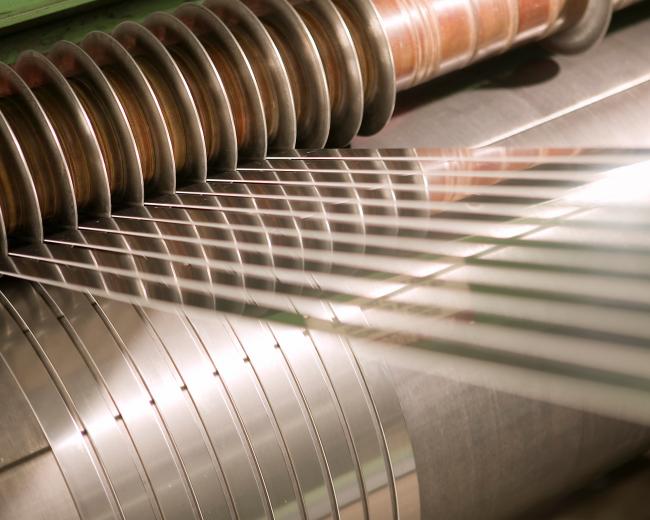
Slitting is the process of cutting wide coils into narrower widths. During the slitting process, the larger width coils are cut into a number of narrower widths as the main coil moves through the slitter. Once cut, each of the finished widths is then recoiled to produce a number of finished, thin coils.
Why Slitting is Beneficial
Slitting is an important process when tight tolerances need to be maintained and smaller coils are a better fit for your application. Working with a smaller coil can also mean less scrap and better economics when developing a finished part. At UPM, we also offer specific edges or edge conditioning for these smaller cut coils. You can read more about the different edges available on our Edging page.
UPM Slitting Capabilites
Slitting lines are built to accommodate a large array of materials. With five slitters including 12", 18" turret, 18" light gauge, 24" and 50", we have one of the most comprehensive slitting operations capable of processing the largest to the smallest order.
- The 12” slitter is capable of slitting coils ranging in thickness of .015 to .125.
- The 18” Light Gauge slitter is capable of slitting coils ranging in thickness of .005 to .35.
- The 18” Turret Head slitter is capable of slitting coils ranging in thicknesses of .020 to .125.
- The 24” slitter is capable of slitting coils ranging in thickness of .015 to .060.
- The 50” slitter is capable of slitting coils ranging in thickness of .015-.125.
Turret Slitter Benefits
The Turret slitter boasts state-of-the-art technology which will yield reduced set up time, increased line speeds, the ability to pull narrow cuts, and overall operator efficiency. This slitter also features a pressure bar system which eliminates scratching and reduces camber and an interchangeable rewind drum capable of 16” or 20” ID options.
